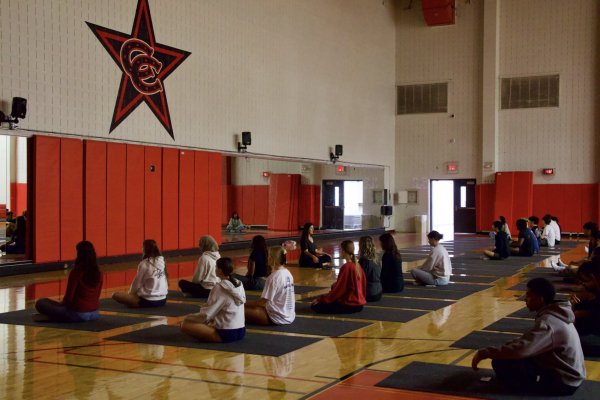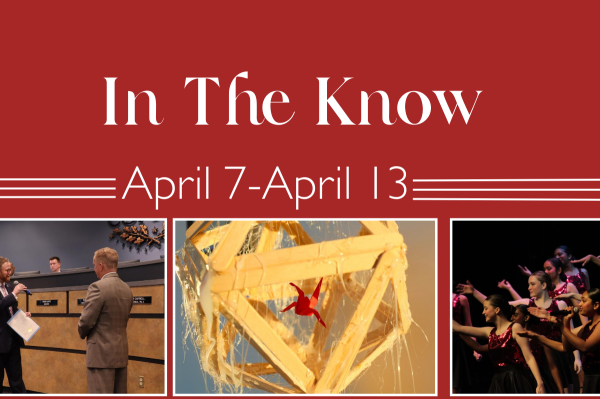Imposters in the newsroom: Fake news sweeps nation, confuses readers
Scrolling through one’s timeline on Twitter or Facebook, one might come across news article after news article. One might click on one and read about it. One might then go and talk about it with friends.
News is a big part of people’s lives; it is interlaced with their daily conversations and guides the opinions they have on the world around them. But more and more often, news found on the Internet is unreliable.
So what if someone goes and talks to their friends about a fake news story, thinking it is real? What if it influences their habits, friendships or who they vote for?
“When I see other people who are very intelligent and wise people getting caught up in these moments emotionally, it’s very frustrating,” Coppell High School Human Geography teacher Andrew Patterson said. “If people would just take a step back and analyze it and say ‘OK hold on now what’s really going on? Is this all true?’ and ask these critical questions without blindly believing they would see how ridiculous it is all the things that they’re feeding us.”
As fake news infiltrates the internet, people have remained unaware of its grasp on their perception of reality. To combat the influence fake news has on the population, people need to be able to recognize and avoid false information.
Because of many people’s inability to recognize fake news stories such as the Pope endorsing President Elect Donald Trump, or Hillary selling weapons to ISIS were published in 2016 by fake news sites and believed by many readers. Such publications affected the general public’s political ideas and even their votes.
The problem of fake news being shared on Facebook has become such a prominent issue that Facebook is partnering with five fact-checking organizations to go over posts that users flag as fake news.
Even within Coppell, administrators are finding it necessary to educate students on the fake news epidemic. Students at Coppell Middle School East read a story about the influence of fake news on November’s Presidential Election.
“I think that as the generations become more technologically advanced, [fake news is] easier to spot,” CISD Director of Communications and Public Relations Mandy McCune said. “Hopefully they’ll be able to determine, and we at CISD have done a good job in teaching you what’s news and what’s not and the routes to take when you’re not quite sure if it is or isn’t.”
How to avoid fake news:
Make sure you can recognize satirical sites.
In some cases, the article is not meant to spread false information but instead was written as a comic article. Be sure not to take a joke the wrong way by being familiar with sites that have good, but comic, intentions.
Don’t trust screenshots.
Headlines may easily be photoshopped onto reliable looking sites in a screenshot, making a fake news story appear very real. Stories such as Trump telling People Magazine in 1998 “If I were to run, I’d run as a Republican. They’re the dumbest group of voters in the country.” were believed by the public because they appeared credible in an image, but unless the article and it’s sources are linked, be cautious about believing the first thing you see.
Don’t just read the headline
There is more to the story than just the headline, and the title of an article may mislead its reader without the intended context.
Report fake news on Facebook
Facebook now includes a way to report fake news as part of its initiative to combat the flow of stories on it’s site. It needs users to report news assumed to be fake so that fact checking websites can review it and remove it from the social media platform.
Unfollow/unfriend people who post a fake news, or ask them to stop
The fake news on your site may be posted by a small handful of people, removing these posts from your timeline completely by unfriending users that commonly share fake stories or asking them to stop allows you to detox your timeline and frees you from the confusion a fake story can cause.
Rely on fact checking websites
If a story seems questionable, there are ways to submit it to a fact checking website like FactCheck.org that can research the story to find validity or lack thereof to its claims.
Who posted it? Was it a reliable site?
Rely on large, credible news sites such as the Wall Street Journal or the New York Times as they are less likely to scam readers with a fake news story for fear of damaging their credibility.
Was it repeated in other sites?
If a story has been published on several reputable news outlets, it is more likely that it is reliable.

Amelia is a senior and has been a part of The Sidekick for two years. This year she is serving as the paper's Editor-In-Chief and Executive News Editor....








